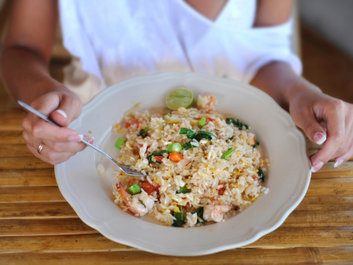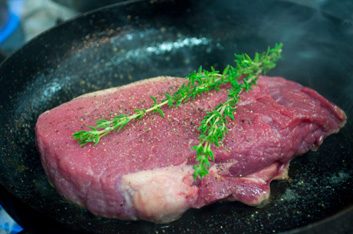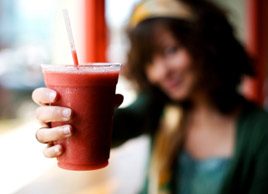
1. Getting smart about carbs
When I finished graduate school in the early 1990s, carbohydrates such as bagels, pasta and potatoes were considered superstars for energy. Then, a resurgence of the Atkins diet for weight loss sparked an era of low-carb or no-carb eating. But from a nutrition point of view, carbohydrates provide B vitamins, iron and fibre, and are good fuel for our muscles and brain.
The key? We should be choosing whole-grain carbs such as brown rice and barley more often rather than refined carbs such as white rice or white pasta. That’s because whole grains typically have more vitamin E, magnesium and zinc, as well as a lower glycemic index (which is better for blood sugar control). And healthy grains such as buckwheat, quinoa and kañiwa (a cousin to quinoa and pronounced kah-nyee-wah) are here to stay, not just because they are gluten-free-obviously a huge trend, too-but also because they are whole grains with lots of good-for-you benefits including protein.
Try: Nutrient-packed supper salad: Cook 1 cup (250 mL) of quinoa in 1 cup of water and 1 cup of milk (the milk adds extra nutrients like calcium, and magnesium). Toss cooked quinoa with torn kale leaves, toasted walnuts, diced avocado and grilled chicken. Then drizzle with your favourite salad dressing and enjoy!

2. Eating socially-conscious meats
Many grocery store chains such as Longo’s, Whole Foods and Sobeys offer meats that have been certified to be humane by the Humane Farm Animal Care non-profit organization: That means animals are fed a nutritious diet, raised without antibiotics and allowed sufficient space for grazing. I feel good buying meat from producers that respect animal welfare. It does cost more, but hopefully as demand for these products rises, the prices may come down. Hand in hand with this trend is that, since these meats can be pricier, more families are going meatless more often, which is good for our health and the environment.
Tip: Go to certifiedhumane.org to find stores that sell certified-humane products. And consider a break from meat once a week; try one of our healthy “Meatless Monday” recipes.

3. Being sensible about sodium
The average Canadian eats about 3,400 milligrams of sodium every day, which is equal to about one and a half teaspoons of salt. Some of that comes from over-salting home-cooked meals, but more than 75 percent comes from packaged foods. We do need some sodium to control our blood pressure and help our muscles and nerves work properly, but eating too much can lead to high blood pressure.
Health Canada recommends sodium intake for most people should be limited to 1,500 milligrams daily. What I feel is a more achievable target is the new recommendation by Hypertension Canada. Its task force reviewed the latest science and found that, for most adults, cutting back to a maximum of 2,000 milligrams of sodium (the equivalent of just under one teaspoon of salt) daily could still have beneficial effects on blood pressure. If you are at risk of hypertension, speak to your doctor about what’s right for you.
Tip: Sodium adds up quickly in packaged foods, so be sure to read food labels. Eat more vegetables and fruit; they are naturally no- or low-sodium.

4. Having better breakfasts
Gone are the days of eating only a muffin for breakfast. The trend is now toward eating protein in the morning to help with satiety, which may minimize overeating later in the day. Protein also helps build antibodies and muscles. Experts recommend we aim for 25 to 30 grams of protein at breakfast.
Try: Each of these breakfasts contains about 25 grams of protein: a peanut butter sandwich on whole-wheat with a glass of skim milk (440 calories); 1 cup (250 mL) Greek yogurt plus ¼ cup (60 mL) almonds and a handful blueberries (365 calories); 2 scrambled eggs with 2 slices ham and 1 cup soy beverage (390 calories).
Related:
• Who’s leading the fight against childhood obesity?
• 3 essential nutrients for vegans
• Healthy eating tips for students
